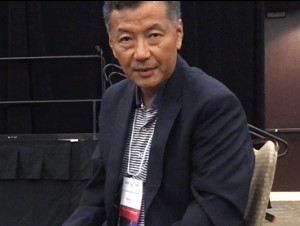
From YaleNews – For millions of Americans, contact with certain foods can cause anaphylaxis, a life-threatening allergic reaction. A new study has uncovered a previously unknown cell type that promotes the reaction and could be used to identify individuals who are most at risk.
The study, co-led by researchers at Yale School of Medicine and The Jackson Laboratory for Genomic Medicine, was published online in Science.
Researchers have long known that an antibody called IgE initiates anaphylaxis, which can cause rapid pulse, trouble breathing, and even shock. But it was not clear exactly how a rare form of IgE that binds strongly to allergens, such as peanuts, was made by the immune system.
Co-lead author Stephanie Eisenbarth, MD, and the research team studied mice modified to have severe allergies and an abundance of the IgE antibody. They focused on two types of immune cells, T and B cells. Through experiments, they discovered that a subset of T cells, which they dubbed Tfh13 (T follicular help cell 13), helps B cells make the rare form of IgE. The researchers then examined cell samples from mice and patients with food and respiratory allergies, confirming the presence of the mysterious Tfh13 cell.
T Cell Linked to Anaphylaxis

This finding could lead to changes in the way ongoing clinical trials that include individuals with allergies are analyzed, and how patients with allergies are tested and diagnosed. While many individuals have IgE in their blood, they may not actually be at risk for anaphylaxis. But testing for the Tfh13 cell could potentially help clinicians identify those most likely to have a severe and possibly fatal reaction, Eisenbarth noted.
“We discovered a new subset of T cells that’s important for allergic responses — responses that are necessary for the anaphylactic reaction,” said Eisenbarth, associate professor of laboratory medicine.
In future studies, researchers can also use this insight to focus on developing drugs to block the anaphylactic response, she added.
Other study authors are Gowthaman Uthaman, Jennifer S. Chen, Biyan Zhang, William F. Flynn, Yisi Lu, Wenzhi Song, Julie Joseph, Jake A. Gertie, Lan Xu, Magalie A. Collet, Jessica Grassmann, Tregony Simoneau, David Chiang, M. Cecilia Berin, Joseph E. Craft, Jason S. Weinstein, and Adam Williams.
This work was supported in part by Food Allergy Research & Education (FARE) and the National Institute of Allergy and Infectious Diseases.
Reprinted with permission from YaleNews. Study published in Science.





